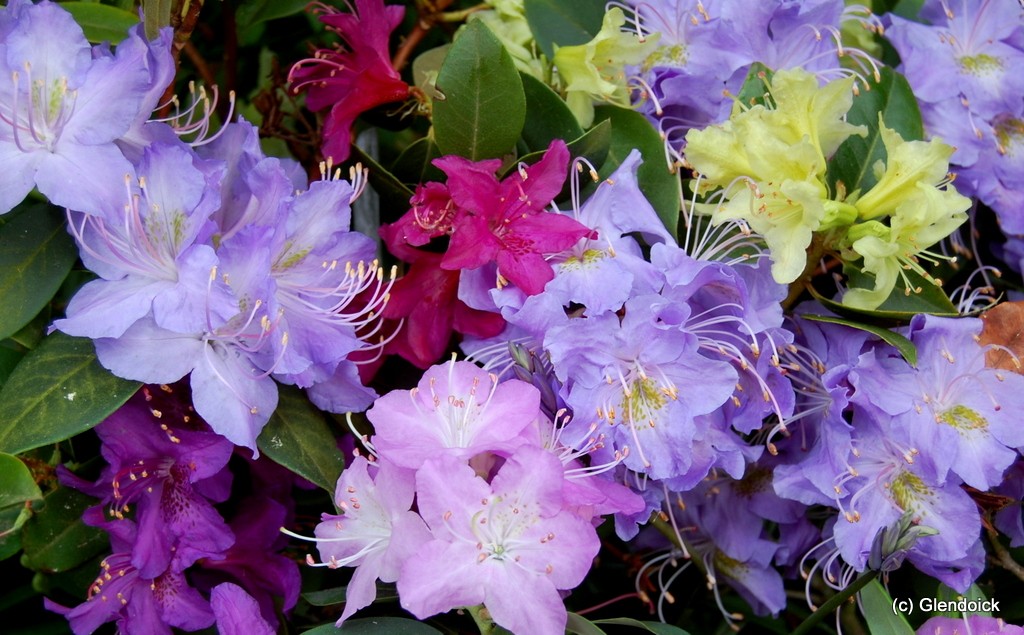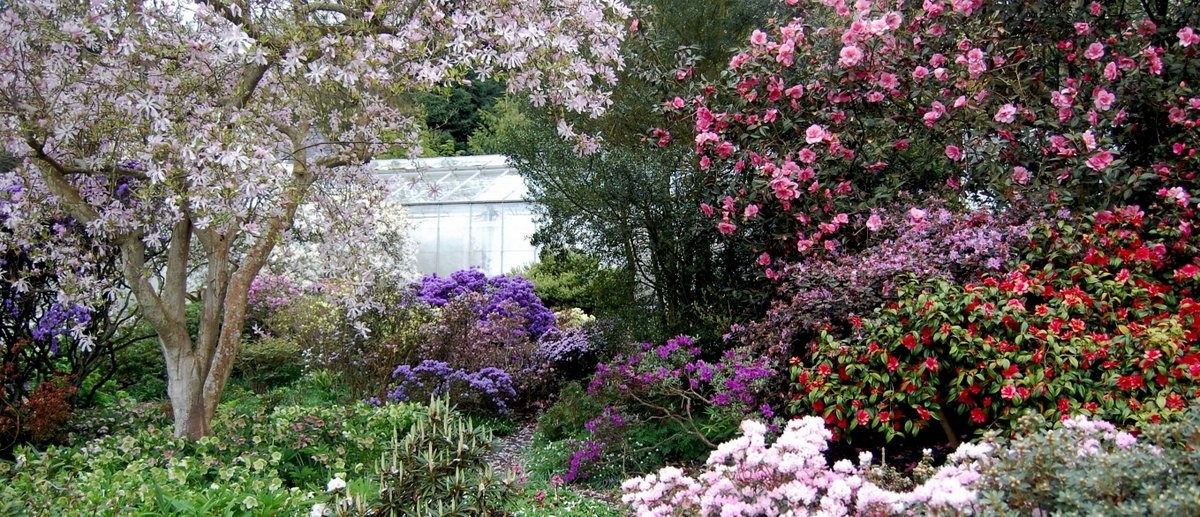By Kenneth Cox, Glendoick
Rhododendrons and Acid Soil
- Rhododendrons need acid soil and they naturally grow on peaty soils in the Himalaya, Japan and China.
- Soil acidity is measured according to the pH scale. Ideal is pH 4.5-6. Neutral is pH7 and higher than 7 alkaline.
- Most soil in Scotland is naturally acidic.
- Soil may have been artificially limed for farmland, growing vegetables etc. This washes out over 3-5 years. If liming has been done recently you can balance this by planting with acidic compost: rotted leafmould or composted bark. You can also use sulphate of ammonia to lower/acidify soil pH: apply before planting as too much can burn leaves.
- You dont need peat for planting in garden soil.
How do I know if I have acid soil?
Soil test kits are not always accurate: you may need to do several samples to get consistent results. If there are rhododendrons/ acid loving plants growing well nearby, your soil is acid. Best advice is to ask neighbouring gardeners.
Soil Preparation & Organic Matter
- Rhododendrons need an open soil mixture. Very heavy (clay) and very fine particles (silt) are not suitable.
- To improve soil, making it more open (i.e containing air pockets) organic matter should be added: leafmould is the best. Alternatives are compost (own or bought), composted bark or conifer needles.
- There is little point in spending money on rhododendrons and azalea if you are not prepared to do some soil preparation. Improve the soil in an area much bigger than the rootball so there is room to grow.
- If drainage is good, then soil preparation need no more than 30cm (12in) deep.
- Peat is no longer available to amateur gardeners. Other garden compost, conifer needles, rooted leafmould and composted bark can all be used to make an acidic soil mixture.
- Ericaceous compost which you can buy in garden centres, used to be a mixture of peat, green waste and some fertiliser. Peat free Ericaceous compost is if not good for growing acid loving plants. Best to mix this with leafmould, rotted conifer needles, garden soil to get good long term results in containers. Adding perlite to the mix will help ensure good drainage.
Clay Soil
In heavy clay soil, a raised bed is best: 30-45cm deep on top of the clay soil. Make a soil-compost-bark-peat etc mix and plant into this.
How to Plant
Ensure plant is well-watered (but allowed to drain) before planting. Mix some organic matter (see above) into the existing soil as a planting medium. Soil should be firmed up around the roots but do not stamp on the rootball; avoid compacting the soil. For bare rooted stock, October to early April is the best planting time. Container stock can be planted at any time but if planted May-August water through the first growing season.
Planting Depth
Rhododendrons must not be planted too deep. The rootball should be just below the surface. If you bury the rootball, you may kill the plant. Do not put very thick layers of mulch over the rootball
Glendoick Open Ground Production: bare root stock
Glendoick is unusual for the UK in that we have resisted the temptation to change from field to container production of rhododendrons. Bucking the current trend to grow everything in containers, we still grow more than 80% of rhododendrons and azaleas outside in nursery beds where they form large and vigorous root systems and good plant habit. We are convinced that better and more easily-established plants are produced by open ground production methods and many species cannot be produced in containers at all. We only sell plants mail order when dormant. October to end of March.

